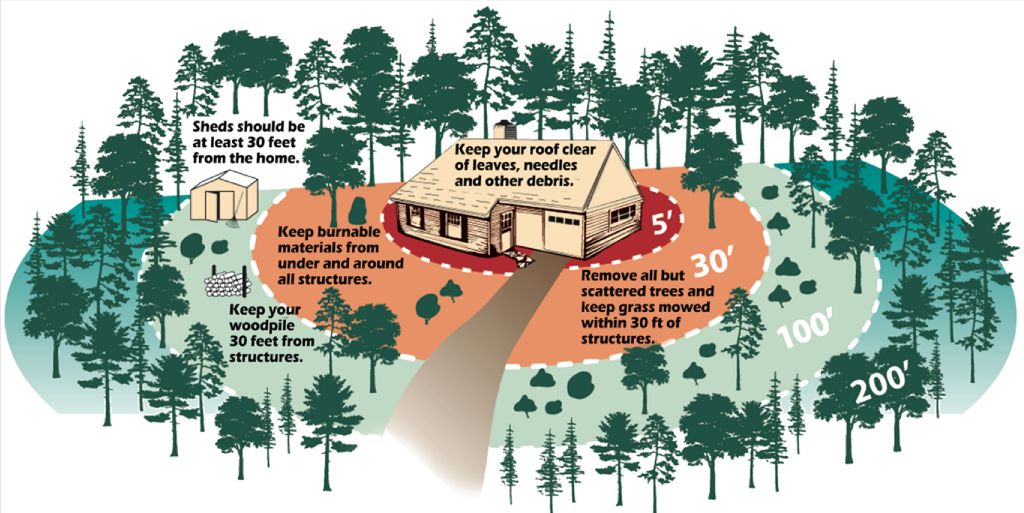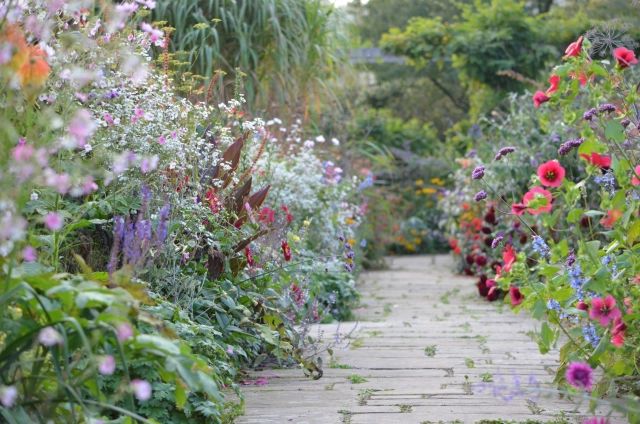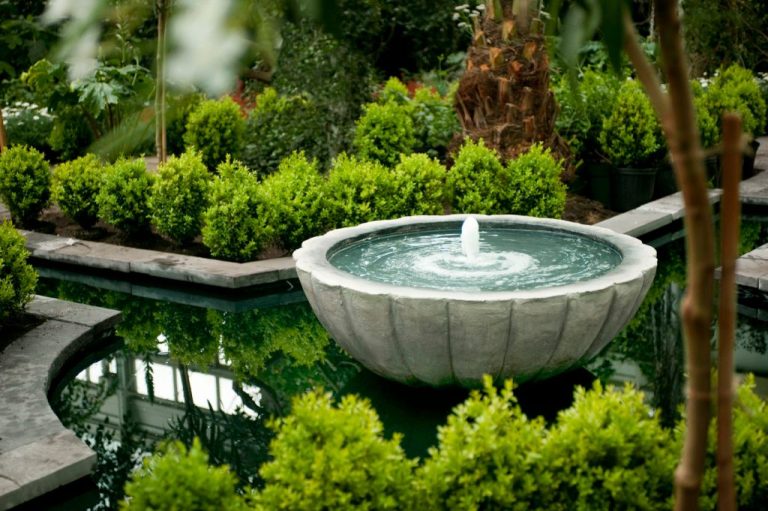Designing A Fire-Safe Garden: Protecting Your Home And Landscape
Wildfires are becoming an increasingly dangerous threat across the United States. According to federal data, humans cause about 85% of wildfires every year, with lightning accounting for the other 15%. In 2022 alone there were over 66,000 wildfires that burned nearly 7 million acres of land. With climate change leading to hotter, drier conditions in many areas, experts predict the risk of catastrophic wildfires will only continue to grow.
That’s why it’s so important for homeowners to take steps to protect their properties through fire-safe landscaping techniques. Simple changes like clearing leaves and brush around your home, choosing fire-resistant plants, using non-flammable mulch, and creating fire breaks can make a huge difference in whether your home survives a wildfire. This guide will walk through the most effective ways to design and maintain a landscape that protects both your home and the natural beauty around it.
Clearing Space Around Your Home
Creating defensible space around your home is crucial for protecting it from wildfire. According to Cal Fire, defensible space is the buffer between a structure and the surrounding wildland area that acts as a barrier to slow or halt the spread of fire to a home. Clearing flammable plants, brush, and other vegetation within 30 feet of structures is especially important.
Cal Fire recommends clearing 30 feet around your home and other buildings on your property. Within this first 30 feet, plants should be low-growing, well-irrigated, and less flammable. This helps prevent direct flames and radiant heat from easily igniting your home’s exterior. Maintaining 6 to 30 feet of defensible space also gives firefighters room to defend your home if a wildfire approaches.
Specifically, the first 5 feet around a home should have noncombustible landscaping materials like gravel, concrete, or high-moisture plants. From 5 to 30 feet, plants should be low-growing, well-spaced, well-irrigated, and free of dead material. Trees should also be thinned and pruned up to 6-10 feet from the ground. Following these guidelines for the area immediately around a home significantly reduces fire risks.
Sources: https://www.readyforwildfire.org/prepare-for-wildfire/get-ready/defensible-space/, https://csfs.colostate.edu/wildfire-mitigation/protect-your-home-property-from-wildfire/
Selecting Fire-Resistant Plants
When selecting plants for a fire-safe landscape, choose those that are low-growing, open structured, and fire-resistant. Avoid plants with high sap or resin content, as well as those with loose bark or lots of dead branches (source). Focus on planting fire-wise varieties close to your home and decking.
Some examples of fire-resistant plants for various areas include:
Trees
Some good fire-resistant tree options are oak, maple, aspen, sycamore, cherry, and Douglas fir (source). These should be planted at least 30 feet from structures. Avoid planting pines, firs, and other conifers near the house.

Shrubs

Choose shrubs like hedging roses, bush honeysuckles, currant, sumac, and other low-growing varieties. Plant these at least 10 feet from structures (source). Avoid juniper, other conifers, and volatile shrubs like sage.

Groundcovers
Some fire-resistant groundcover options include aloe, ice plant, creeping thyme, and succulents like sedum. Use these within 10 feet of your home (source). Avoid ivy, ferns, and other rapidly spreading groundcovers prone to dry out.

Using Fire-Safe Mulch
Organic mulches like pine bark or wood chips have been known to fuel fires rather than prevent them from spreading in the wildland-urban interface. When they dry out, organic mulches become combustible and can rapidly carry fire to other parts of your landscape. Although landscaping companies may commonly recommend the look and feel of organic mulch, it’s essential to choose fire-safe mulch options in fire-prone areas.
The safest mulch choices for reducing fire risks are inorganic materials like gravel, pebbles, crushed stone, or rocks. Decomposed granite is another excellent fire-resistant mulch option (3)(2). Mulches made of recycled rubber, glass chippings, lava rock, or artificial chipped stone are also effective at preventing fire spread while retaining many of the moisture control, weed block, and erosion control benefits of organic mulch.
When selecting an inorganic mulch, opt for materials sized between 1-2 inches. Very fine materials can become compacted and limit water and air circulation. Large rocks or boulders shouldn’t be used right next to the home but can be effective further out in the landscape. Take care to use only 0.5-1 inch gravel near pathways for accessibility.
While inorganic mulches tend to be more expensive upfront, they are permanent landscaping investments that don’t need frequent replacement like organic mulches. Their fire resistance and longevity make them ideal choices for fire safety. Maintain a 2-4 inch depth of inorganic mulch, and replenish as needed over time.
Maintaining Your Landscape
Keeping your landscape well-maintained is crucial for fire safety. During hot, dry seasons it’s especially important to keep plants hydrated and free of dead leaves, branches and other debris that can easily ignite from embers or heat radiation.
Make sure to water trees, shrubs and other vegetation regularly according to their needs, especially during periods of drought. Depending on your climate, watering 1-3 times per week may be necessary to keep plants healthily hydrated. Consider installing an automatic irrigation system with timers to ensure consistent watering. Refer to this source for details on maintaining adequate moisture levels.
It’s also critical to regularly clear away dead vegetation. Remove fallen leaves and pine needles from your landscape beds and lawn. Prune dead branches from trees and shrubs. Mow your lawn often and keep grass cut short, 10 inches or less. Rake up and dispose of debris instead of mulching or composting it.
Perform seasonal maintenance as needed. Clear gutters and roof areas of debris during fall. Rake mulch away from structures prior to summer. Inspect trees and shrubs and prune in late winter. Keeping your landscape tidy goes hand-in-hand with making it fire-safe.
Choosing Fire-Wise Decking & Fences
When designing a fire-safe landscape, it’s important to carefully consider the materials used for decks, patios, and fencing. Traditional wood decking is highly flammable, making it extremely vulnerable to flying embers during a wildfire. According to https://firesafemarin.org/harden-your-home/fire-resistant-decks-patios-porches/, most deck boards, including wood, plastic, and wood-plastic composites are combustible.
Instead, fire-resistant decking materials such as metal, cement, stone, or tile are better options. Materials made from lightweight concrete or stone have excellent fire resistance properties. Composite decking made with fire retardant chemicals also have improved fire safety over traditional wood. Opt for Class A fire rated decking materials whenever possible.
For fencing around your property, avoid flammable wooden fences attached directly to the home. Well-maintained metal fences provide far better fire resistance. Additionally, brick or stone walls are great choices. Ensure any fences near the home use non-combustible gate materials. Follow fire zone regulations for fence and decking materials to protect your landscape from wildfires.
Storing Firewood & Other Items
It’s important to take caution when storing firewood and other flammable items like propane tanks next to your home or other structures. Storing these items too close can allow fire to easily spread from the flammable source to your home.
Firewood and propane tanks should be stored at least 30 feet away from any structures, and even farther is better. Keep them in a covered, ventilated area like a shed or covered rack (ShelterLogic). Don’t stack firewood or propane tanks directly against walls, fences, or your home’s foundation.
Also avoid storing firewood in garages, under decks, or in crawlspaces, as it can attract termites and increase fire risks. Dried leaves, pine needles, and other debris should also be kept cleared from around any structures and firewood storage areas.
By properly storing firewood, propane, and other flammables at a safe distance, you can greatly reduce the chance of fire spreading to your home’s exterior or nearby landscapes.
Creating Fire Breaks
One of the most effective ways to protect your home and landscape from wildfires is to create fire breaks around your property. Fire breaks are areas clear of vegetation that act as barriers to slow or stop the spread of fire. Some simple yet highly effective fire break options for your landscape include:
- Driveways and gravel paths – Using existing hardscapes like driveways and gravel paths as fire breaks is a great strategy. Make sure to keep them cleared of debris and overhanging vegetation.
- Stone patios – Much like driveways, patios and paved areas can be incorporated into your landscape design to serve as fire breaks. Using stone instead of wood for patios is recommended.
- Decks – Switch from using wood to composite decking materials when possible, as composites are much more fire resistant. Also be sure to enclose any space beneath a wood deck.
- Green lawns – Well-irrigated and maintained lawns can act as fuel breaks. Just be sure to remove any dry grass, debris, and shrub overhang from lawn areas.
- Gravel zones – Adding a 3-5 foot gravel zone around the perimeter of your home provides separation between the structure and landscape. Keep gravel zones free of vegetation.
When designing fire breaks, maximize the space by incorporating existing hardscapes and lawn areas into your landscape layout. Also be strategic with new fire breaks by considering likely fire approaches and seasonal wind patterns. Maintaining proper clearance around fire breaks is also essential for their effectiveness. In high fire risk areas, fire breaks of at least 30 feet around the home are recommended.
Protecting Your Home
When building or renovating your home, choosing fire-resistant materials can greatly reduce the chance of fire damage. Some of the most important materials to consider are siding, roofing, vents and doors/windows.
For siding, materials like stucco, brick and concrete are extremely fire-resistant. According to HowStuffWorks, stucco is one of the best siding options for fire safety as it’s noncombustible and doesn’t allow embers to penetrate (source). Fiber cement siding is another good option, being made from sand, cement and cellulose fibers.
When it comes to roofs, materials like metal, slate, clay and asphalt shingles are recommended for fire resistance. Metal roofing like steel and copper is noncombustible. Tile and clay roofs are very resistant to heat. And Class A asphalt shingles are specially designed to protect against moderate to high fire exposure (source).
For attic vents, ember-resistant vents made of metal mesh can prevent sparks and embers from entering your attic space. Brands like O’Hagin, Amber Inlets and Vulcan Venting make vent options tested against ember intrusion.
Finally, fire-rated doors, windows and shutters made with tempered safety glass, and fire-retardant coatings and fabrics can slow the spread of flames. Install these properly according to manufacturer guidelines for optimal fire protection.
Conclusion
There are many ways to create a fire-safe garden and protect your home and landscape from potential wildfires. Clear brush and flammable vegetation from around your home to create a defensible space. Choose fire-resistant plants to avoid highly flammable vegetation. Use fire-safe mulch for better moisture retention to keep plants from drying out. Maintain your landscape regularly by pruning and watering plants. Opt for firewise decking and fences made from metal, brick, or other non-combustible materials. Properly store firewood and other flammable items away from your home. Build fire breaks to slow the spread of fire on your property. Protect your home with fire-resistant roofing and building materials. Actions like these, done systematically, can greatly reduce the risk of damage from wildfires.
For a complete fire safety assessment, contact your local fire department to have them evaluate the fire safety of your property. Making small improvements over time can make a big difference in protecting your biggest investment – your home. By taking a proactive approach now, you can have peace of mind knowing you’ve done all you can to prepare your home and landscape to be as fire-safe as possible.




